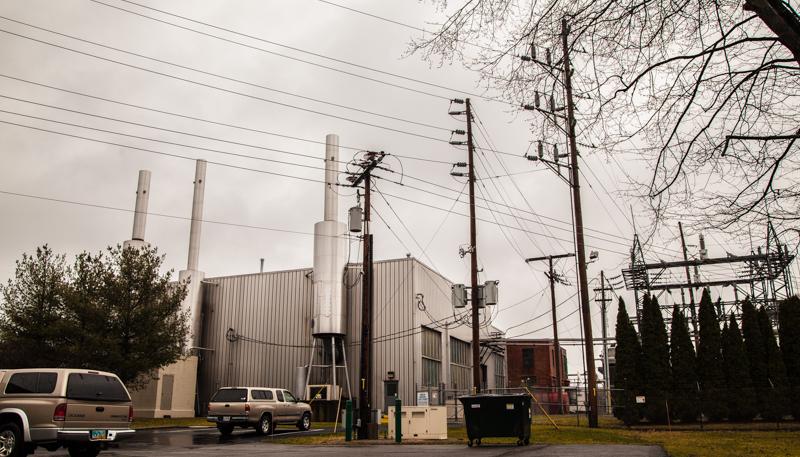Faculty Look to Achieve Carbon Neutrality
The community-owned Oberlin Municipal Light and Power System plant generates and provides electric power to its 3,100 residential and commercial customers. Oberlin College is working toward its goal of becoming carbon neutral by 2025.
March 11, 2016
With 20/20 hindsight, several major stakeholders in Oberlin College’s Environmental Policy Implementation Plan are working to find new ways to achieve carbon neutrality by 2025.
The plan, which was adopted in November, calls for a number of implementation strategies including further integrating education on environmental issues into the College’s curriculum. Although a number of these strategies have been realized, those charged with implementing the plan are pushing for a more intentional commitment to environmental sustainability.
“We’ve made a good start, but we have a lot more to do,” said Cindy Frantz, professor of Environmental Studies. “I think we’re in a good position to make change happen faster than we have in the past 10 years.”
These changes will include holding structured strategic planning sessions with community members and developing a sustainability-centered subcommittee with the Board of Trustees. The Committee for Environmental Sustainability, the main organization behind the plan’s implementation, has also committed to raising awareness about the strategies the plan outlines, as well as initiatives students can spearhead on their own, like reducing the amount of car usage on campus.
“We have this policy and now this plan, but most people have never read them. Some people don’t know they exist,” Frantz told The Source. “Some people don’t even realize Oberlin has a commitment to carbon neutrality. So one priority is to get this information into every orientation for every new person who comes to campus — students, faculty and staff.”
Because initiatives vary based on an individual’s role within the College or the city, CES plans to distribute sustainability strategies for a number of roles, such as students, administrative assistants and grounds workers.
Over the past decade, the College has reduced carbon emissions by 50 percent, as was delineated in the plan. Emission reduction was more efficiently streamlined after the College purchased a 2.27-megawatt solar array in 2012, when the College partnered with the city’s municipal utility company to provide solar energy to both the institution and the city of Oberlin at large.
According to Bridget Flynn, Oberlin College’s sustainability coordinator, 86 percent of the utility company’s electricity is the product of renewable sources.
There have been several setbacks since the plan was implemented, the most prominent of which was the combustion of recycling trucks in February 2015. This led to an increase in the amount of waste sent to Oberlin’s landfill.
But despite what may be a less-than-ideal level of awareness among community members, the plan has largely been smooth sailing. Some of the long-term goals of CES include implementing a heating system absent of natural gas and assisting the city in its goal of reducing carbon emissions 100 percent by 2050.
“We all need to change our behavior,” Frantz said.
Additional reporting by Madeline Stocker, Editor-in-Chief.

















